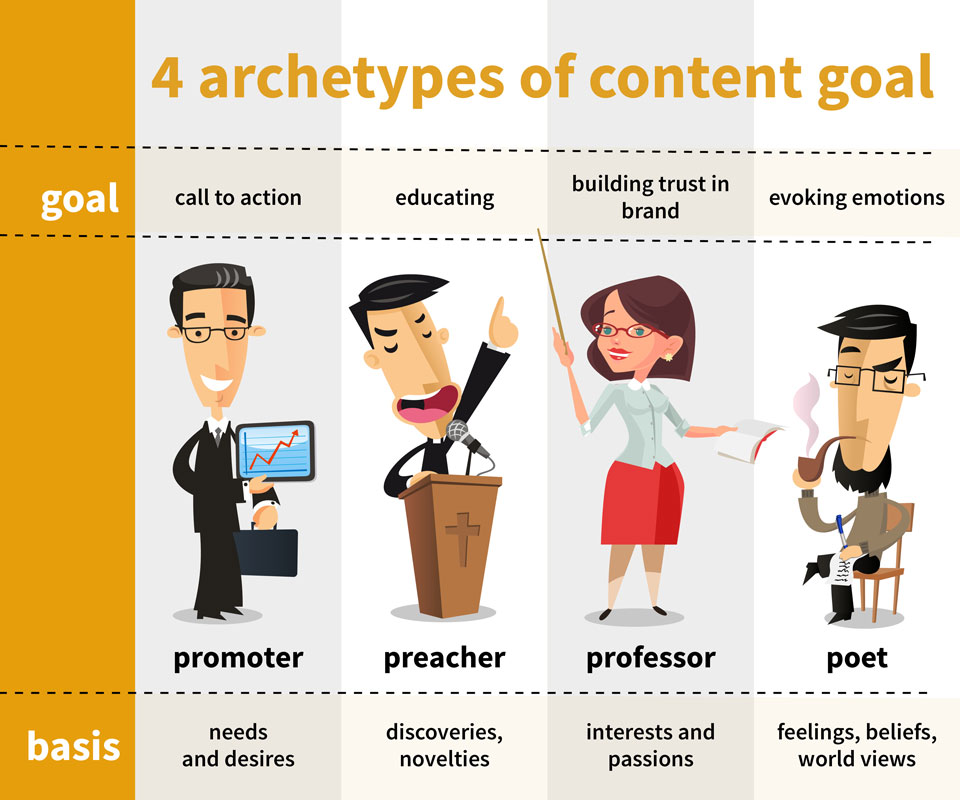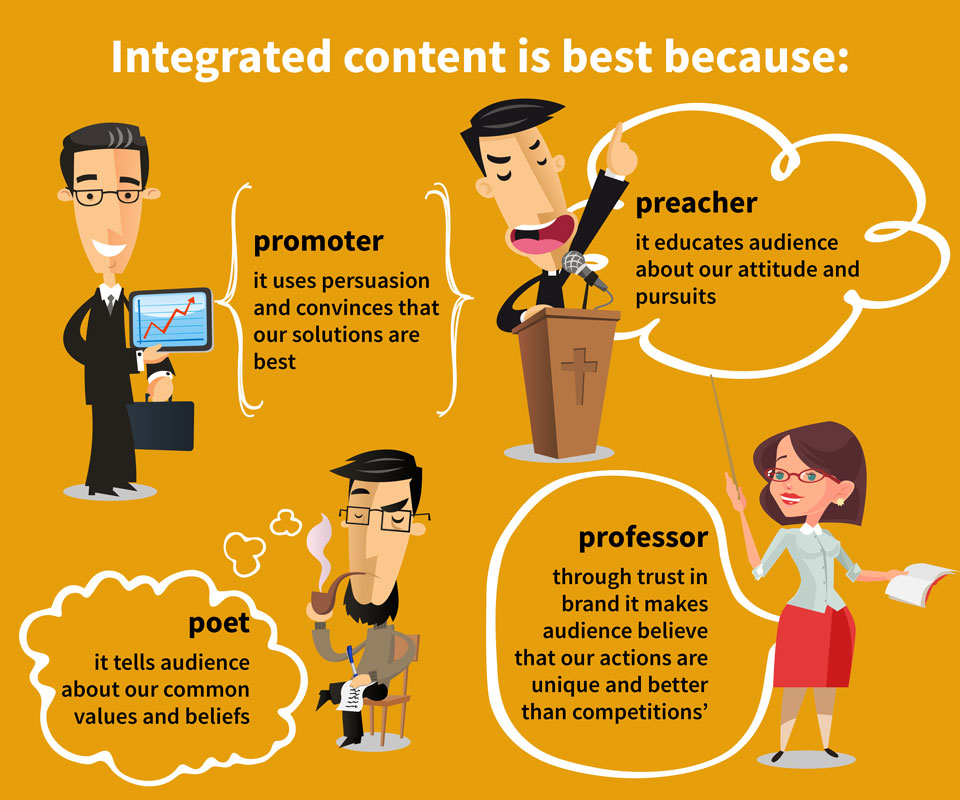
We very often tend to think with the form – “I have to do an advertising campaign,” “I’m doing an email campaign,” “I need a post for Facebook,” “I need an article for my blog.” We first decide on the medium, and then get to thinking about the content. This is a mistake. The channel should follow your intention, not the other way round. We must know what we want to achieve, and then choose the best means of expression. And this is where you need a mission, to show you the direction of thinking. However, we often get caught in a trap believing that the mission of content marketing is selling, while it’s not. As a result, we focus on emphasizing the qualities of our product or service. But is this how you engage the reader? Is this how you deliver unique value? Evoke emotions? No. You simply develop a description of the thing you produce. Your mission should be about what you support, what you believe in, what you want to change. It must be based on customers’ needs, help them solve their problems, inspire them. And even though the word ‘mission’ sounds a bit pompous, the mission itself should be defined in a simple, clear and comprehensive way, without detailed information about your tactics. Your mission should be backed up by clear marketing goals, but those shouldn’t be mentioned in the definition of your mission. You just clearly define what your company aims to do and why it exists.
For instance:
I will create an inspiring source of knowledge for parents expecting their first child, building a website that will help them consciously prepare to the delivery and parenthood and will diminish the stress.
It is a simple and easy to remember definition of a mission, providing information about why and for whom the website is.
Robert Rose, Head of Strategy at Content Marketing Institute, during one of his speeches presented “four archetypes of content goal.” Sounds a bit complex, but it actually means there are four groups of content and each of them is driven by different intentions. The first archetype is the promoter. These are call to action texts or images. They are to present the reasons why a given offer is unique and encourage the viewer to click a particular link. The second archetype is the preacher. It includes content which quickly gets to readers and increases their awareness. It can be e.g. a news article on a website or sent out marketing information helping you find new audience. In the long run, this type of content preaches your attitude and attracts new audience, just as a preacher preaching certain values and inviting people to the church to recur them. Another archetype is the professor. This includes content that is deep, meaningful, educational. It is so valuable that – according to Jay Baer, marketing and customer service motivation speaker – we are ready to pay for it. It is a very informative content which teaches us a given attitude or how to draw more value from a product that we sell to our audience. And the last archetype – the poet. This type of content does not necessarily educate, but it surely evokes emotions. It makes you laugh or cry, gives you an experience.
You don’t have to focus on one archetype and stick to it in all your messages. On the contrary – it’s best to experiment and combine the styles.

The way you can use various intentions and combine various types of content can be seen in the example of one American corporation providing financial services.
It cooperates with managers of hedging and pension funds we could call the wolves of Wall Street. They are responsible for managing huge sums of money. The financial company provides them with information and research to help them buy for less and sell for more. The company decided to build content, but did not have an idea for it, so they decided to look for inspiration at the Content Marketing World. During the meeting somebody told them they should run a blog resolving any doubts about investing. Another person advised them to create a FAQ list of questions that are popular in their sector. The company followed the advice, created a blog, released its posts on Facebook and LinkedIn. It’s SEO results were fantastic, it had 10 out of 20 most frequent keywords, the traffic on its website grew by 25% and on the blog by 100%. It had thousands of likes and shares, 5,000 people following it on LinkedIn and thus created great preacher content. Despite all that, the business did not move a bit.
They started to think how to make their content more visible against competition. The company’s asset was its customer base, giving it detailed information about the way people manage their money, to which others had no access. They decided to use the data to create a unique report. It would require time and money and employing researchers, but the result would be incredibly valuable. The report could be sent to customers, and parts of it to potential customers to see who would like to learn more. They would come up with a unique piece of content available only to people with similar interests and experience. The company could also write articles about the research and its outcomes that no one has written about before. They took up the challenge and as a result started to win more unique users and customers, and their blog and top10 keywords were bringing people to their professor-type content.
Step by step, the company came to understand its audience better, until they came up with an idea which totally change its mission. Mainly, they realized their goal had always been to help investors be even better investors, and that is how their competition was also thinking. They understood that the way to stand apart is to help investors be better people. They created a book club, because they already knew their audience does not keep abreast with the latest books, movies or theater shows, etc. Each month the customers received a book plus a nicely bound paper report and this was another reason for even more people to become their audience. But the company decided to go even further. They created a cycle of conferences called “ You are the program conference”, where they don’t talk about being a better investor but being a better human. They invited economists, artists, poets, people from various sectors, and organized meetings like those by TED, where they discussed current affairs around the world. Naturally, they have influence on investment decisions, but the goal of the conferences was to better understand the surrounding reality. The idea turned out so brilliant that customers started to apply for invitations themselves. Both these activities were the poetic type of content and were inspiring for audience and started to boost the business.
It is hard to point to the best type of content, as it is an individual matter, dependent on the specificity of the business and its mission. The most crucial and groundbreaking thing is to understand why you want to create content. Do you want to inform, educate, provoke emotions, entertain? The more types of content you can create which coexist and drive one another the better. If it’s possible, try to integrate them.

Kategorie: school of contentic, B2E, B2C, B2B